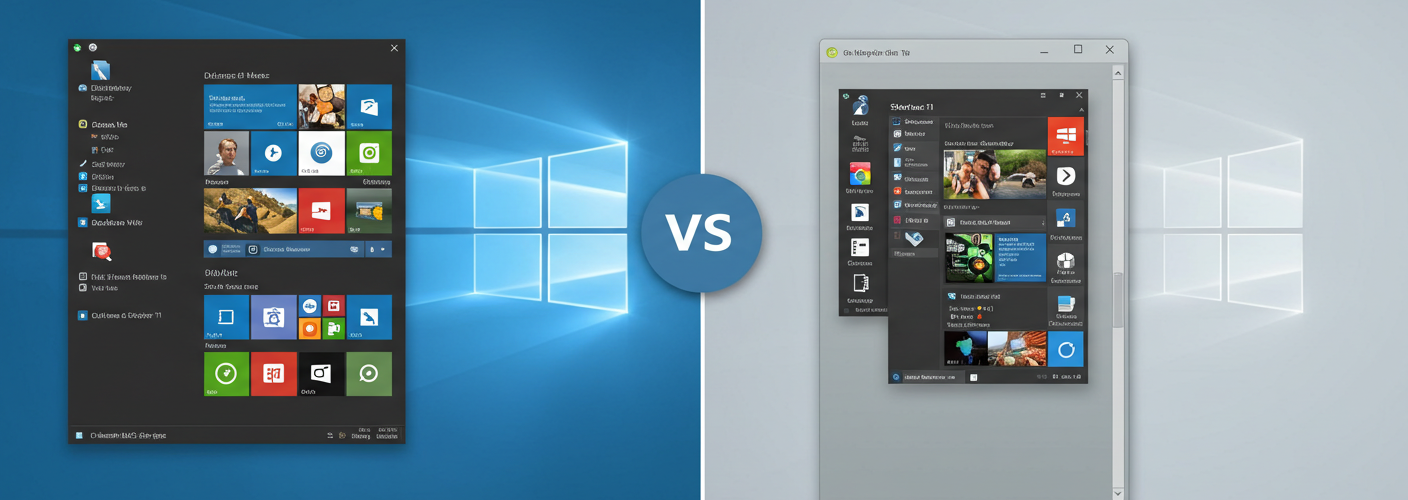What is the Actual Difference Between Windows 10 and Windows 11?
With the release of Windows 11, many users have found themselves asking a crucial question: what are the real differences between Windows 10 and Windows 11? While some voices in the tech community claim that Windows 10 remains superior, others are singing the praises of the new features in Windows 11. Let’s unpack the major distinctions and help you decide which operating system might be right for you.
User Interface Changes
One of the most noticeable differences between Windows 10 and 11 lies in the user interface. Windows 11 sports a more modern, streamlined aesthetic. The Start Menu has undergone a redesign, moving to the center of the taskbar instead of being aligned to the left, which has sparked both approval and resistance from users accustomed to the classic layout. In addition, the Start Menu is now simplified, removing the live tiles feature in favor of a grid of pinned apps, making it easier to navigate without overwhelming users.
Moreover, Windows 11 features rounded corners for opened windows and new system icons that contribute to an overall contemporary feel. Microsoft has also implemented new animations and a more cohesive color palette designed to improve the user experience.
Performance Enhancements
Performance is another critical difference between the two operating systems. Windows 11 is optimized for newer hardware and leverages technologies like DirectStorage and Auto HDR, which enhance gaming experiences. The focus on efficiency means that Windows 11 prioritizes foreground applications, which can lead to speed improvements for those using compatible devices. Users running Windows 11 may notice that their systems can handle multiple tasks with better responsiveness compared to Windows 10.
Virtual Desktops and Multitasking
Windows 11 puts a significant emphasis on multitasking capabilities. The new Snap Layouts feature allows users to easily organize open windows into pre-defined layouts, enhancing productivity. This functionality makes it simple to manage multiple applications at once, which is particularly beneficial for those who work with extensive workflows or frequently switch between tasks.
Virtual Desktops have also been improved in Windows 11, allowing users to create separate desktops for different purposes—like work, personal use, or gaming—complete with different wallpapers and settings for each. This makes managing various activities more efficient than in Windows 10.
Microsoft Teams Integration
In an era where remote work and online collaboration have become the norm, Windows 11 integrates Microsoft Teams directly into the taskbar. This integration allows users to connect with friends, family, or colleagues more seamlessly than with Windows 10, where Teams is available but not as embedded. This feature caters specifically to the rise of hybrid work environments and supports an increasingly digital lifestyle.
System Requirements
A critical consideration when deciding to upgrade to Windows 11 is the increased system requirements. Windows 11 necessitates features like TPM 2.0 and specific CPU requirements that might leave some older devices unable to transition. Windows 10, in contrast, has broader compatibility and remains a viable option for users with older hardware.
In Conclusion
The distinction between Windows 10 and Windows 11 primarily rests on user experience, performance optimization, and new features designed for modern workflows and entertainment. Windows 11 represents a significant step forward, particularly as the operating system evolves to meet the demands of contemporary users. However, whether or not to upgrade will depend on personal preference, device compatibility, and specific usage needs. As such, there is no definitive answer to which operating system is best; it ultimately comes down to the user’s unique situation.





Add comment